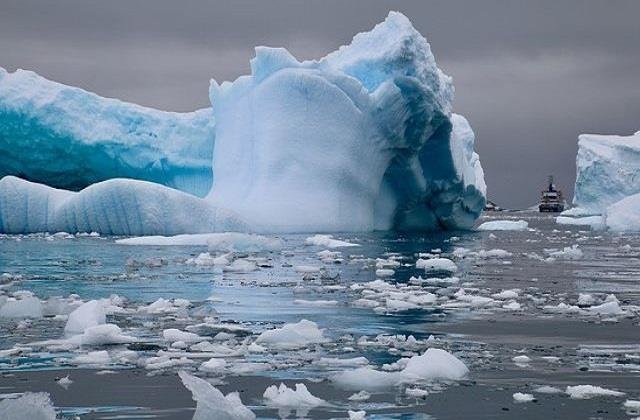Antarctic Ice Shelf: The effect of severe heat in Antarctica, ice as big as Delhi broke, sea level will rise

Antarctic Ice Shelf: A huge rock of ice has broken amidst the scorching heat in Antarctica. This rock is similar to Delhi in shape. It is getting scorching heat in Antarctica these days and the temperature has increased by 40 degrees Celsius above normal. This has put scientists in tension.
Highlights
● The scorching heat in the Earth’s polar region, Antarctica, has caused a lot of devastation.
● Due to the heat, an ice mountain almost the size of Delhi broke in mid-March.
● The name of the iceberg is Kongar Ice Self and it is spread over 1200 sq.km.
Washington: The scorching heat falling in the Earth’s polar region of Antarctica is proving to be disastrous. Due to the heat, an ice mountain almost the size of Delhi broke in mid-March. The name of this iceberg is Kongar Ice Self and it is spread over 1200 sq.km. It is being told that this huge piece of ice separated from Antarctica on 15 March. During this, the temperature there had risen to minus 12 degrees Celsius, which was 40 degrees Celsius above normal.
British oceanographer Rob Larter said: “I don’t think there has ever been such a large ice break off East Antarctica since we’re examining satellite data.” He said, ‘Kongar was a very small iceberg whose size was continuously decreasing over the last several years. Eventually it broke apart. Antarctica is the coldest and coldest place on Earth, which is now facing severe heat.
Average 9 inch rise in water level
This piece of ice broke at a time when for the first time in Antarctica, this year’s lowest ice spread has happened. The sea is covered with ice in this area. Such ice caps prevent the ice from melting into the sea. If these pieces are not there, then the ice will melt and go directly into the sea and its water level will start rising continuously. This will fill the low-lying areas of the earth with water.
Ice scientist Ted Scambos at the University of Colorado in the US says about the scorching heat that has never been seen before in Antarctica. At the same time, Matthew Lazzara, a meteorologist at the University of Wisconsin, said that when we see such a thing, it is definitely not a good sign. can increase to At the same time, according to the Nature magazine, there has been an average increase of 9 inches in this sea level since the year 1880. One-third of this water comes from melting ice in Greenland and Antarctica.




